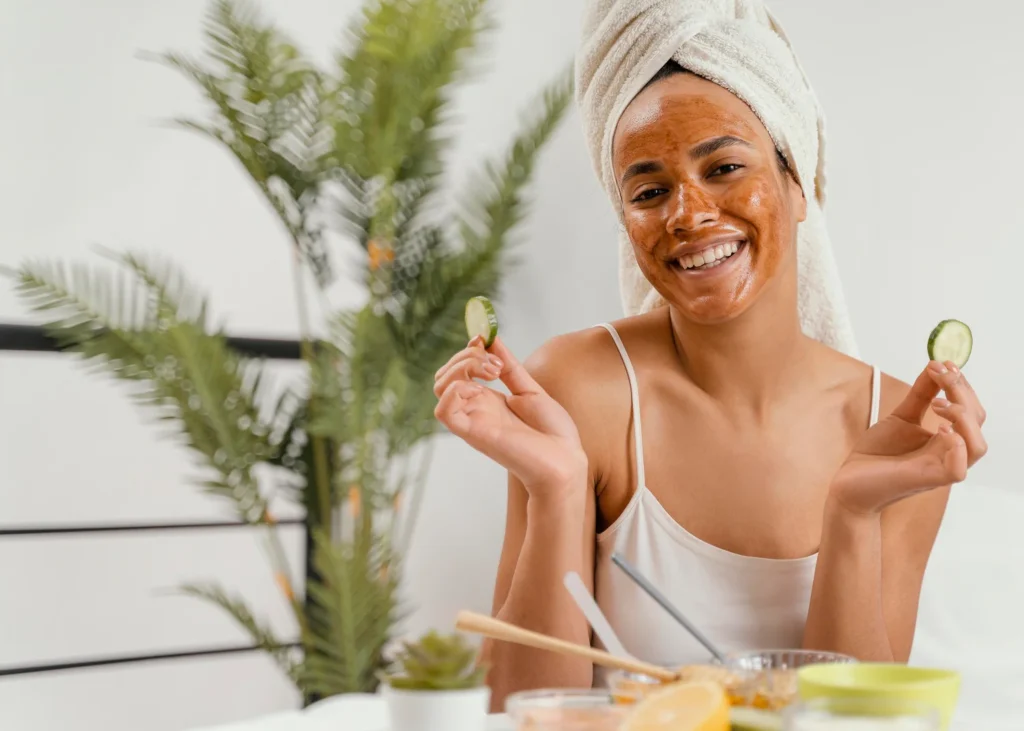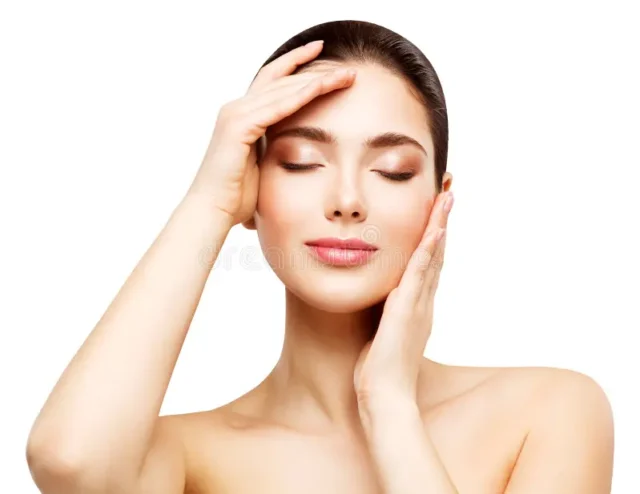Many individuals wish to have healthy clear skin, however, skin is different for everyone and this means that a single approach doesn’t work in all cases. The key to achieving great skin is to come up with a beauty and skin care regimen that brings out the uniqueness in you. We will outline how to go about developing a routine that is specific to your skin type, your skin concerns, and your lifestyle.
Identifying Your Skin Type
It is important to know what skin type you have before buying any products. This is an important step to help you choose suitable skincare products and to avoid skin irritation while ensuring you get the intended benefits from the routine. Essentially, there are five main skin types:
Oily Skin: Excess sebum production leading to a shiny complexion, and a high likelihood of clogged pores and acne breakouts.
Dry Skin: Has a rough or tight feeling, often flaky in appearance and with fine wrinkles that always tend to be dull in status.
Combination Skin: Contains oily and dry skin, often an oily forehead, nose and chin but dry cheeks.
Sensitive Skin: It is easily irritated and often red in color, dermatitis might be common in those with this skin type.
Normal Skin: A skin that is not too dry or too oily, it is rather well balanced and smooth and feels pleasant to touch.
Step-by-Step Procedure on How to Build a Skin Care Regimen
The next step after knowing your skin type is creating a routine that will make your skin healthy and beautiful. A typical skincare routine usually consists of four major procedures, these are; cleansing, toning, moisturizing, and sun protection. Other procedures such as exfoliation and treatment products can be incorporated, depending on the specific needs of the skin.
Step 1: Cleansing: This is the most crucial stage in every skin care routine as it must be performed on any individual. Cleansing is the procedure of getting rid of dirt, oil, makeup or other pollutants from the skin’s surface that build up over time during the day and exposure to environmental factors.
How to Choose a Cleanser According to Your Skin Type:
Oily Skin if you have oily skin, opt for gel based or foam based cleanser since these will remove the surplus oil on the face without stripping your skin.
Dry Skin: One must use a creamy or moisturizing facial wash as this leaves your skin without the feeling of tightness.
Combination Skin: You should try to use gentle non-foaming cleansers on combination skin.
Sensitive Skin: Make sure that you select a cleanser that does not contain any alcohol, or fragrant additives.
Normal Skin: You can use mild cleansers which should have enough hydrating but also contain oil control.
Step Two: Exfoliation
As one of the skin rejuvenation procedures, exfoliation refers to the removal of the outermost layer of the skin which comprises the dead cells. Skin exfoliation is important to all, however, it is important to undertake this depending on the particular skin roughness and type.
Methods of Exfoliation:
Chemical Exfoliants: Alpha and Beta Hydroxy acids, also known as AHAs and BHAs respectively, are skin exfoliation acids that dissolve skin cells, hence performing the task of exfoliation. In situations of excessive tendency of oils glands and or prone acne conditions, products like salicylic acid in BHA are perfect selection; glycolic acid in AHA is more useful when exposure to sun has drained skin moisture.
Physical Exfoliants: Also, these types of products include in their consistency solid grains that mechanically work on scrubbing the epidermis. Care must be observed when using physical exfoliants for patients with acne-prone skin.
Frequency of Exfoliation:
Oily Skin: Two to three times in each week.
Dry Skin: 1-2 times during each week.
Sensitive Skin: 1 time in one fortnight.
Combination Skin: 2-3 times weekly; primarily focusing on the more oily areas.
Exfoliation Table:
| Exfoliant Type | Best For | Frequency |
|---|---|---|
| AHA (Glycolic Acid) | Dry or Dull Skin | 1-2 times/week |
| BHA (Salicylic Acid) | Oily/Acne-Prone Skin | 2-3 times/week |
| Enzyme-based Exfoliant | Sensitive Skin | 1 time/week |
Step 3: Toning
Toners are typically used to balance skin’s pH, remove residues, and tone the skin in preparation for the rest of the regimen. Depending on the ingredients of a toner, it may also serve to add an extra layer of moisture as well as reduce the size of skin pores.
How To Choose A Toner:
Oily Skin Type: For oily skin types, choose a toner free from alcohol but contains properties that remove excess oils.
Dry Skin Type: You can opt for a hydrating toner which contains aloe vera, glycerin or rose water.
Sensitive Skin Type: It is advisable to use a calming toner which contains chamomile or witch hazel.
Normal Skin Type: Most skin types are best suited by using a mild, non-drying toner.
Treatment Products as the Fourth Step
Treatment products like serums or spot treatments are used to prevent or help the skin deal with particular issues like acne, hyperpigmentation, or wrinkles. Including vitamin C serum into one’s regimen is great to brighten the skin and dark spots, in contrast with retinol which is a great anti-aging compound.
How To Choose Treatment Products:
Oily Skin: For this skin type, a serum with niacinamide or hyaluronic acid is recommended.
Dry Skin: A moisturizing serum containing hyaluronic acid or ceramides is ideal for dry skin.
Combination Skin: Choose a serum that can target both dry and oily areas without going overboard on either side.
Sensitive Skin: Use herbal infusions such as calendula or chamomile for their calming effects.
Step 5: Moisturizing
Moisturizing is arguably the most important step in the whole skin care routine. It’s an important practice that hydrates the skin and keeps it from being dry. However, one has to be careful in selecting the right moisturizer.
Selecting a Moisturizer:
Oily Skin: Light, oil-free moisturizer that is easily absorbed and does not block the pores.
Dry Skin: A thick, cream based moisturizer formulated with either shea butter, glycerin, or hyaluronic acid.
Sensitive Skin: Use soothing and fragrance free moisturizers.
Normal Skin: Suitable for all skin types and well-balanced in formulation, non-comedogenic moisturizer.

Step 6: Sunscreen
Sun protection should not be overlooked as it is arguably the most vital element in the whole skin care regimen. Stepping out in the sun without adequate SPF or protection, or skimping on the SPF can lead to various skin conditions, brought on by the UV light. Issues including but not limited to sun damage and photoaging can occur.
Selecting the Right Sunscreen:
Oily Skin: Gel-based, oil-free sun protection with broad spectrum SPF.
Dry Skin: Protect with hydrating sunscreen with SPF 30 and above.
Sensitive Skin: Sunscreens that are mineral based using zinc oxide or titanium dioxide.
Normal Skin: Sunscreen that is lightweight with an SPF level that exceeds 30.
Building Your Routine by Skin Type: On that note, following are some guidelines that can be called a shot of an ideal regimen suited for a particular skin type.
Routine for Oily Skin:
| Step | Product Recommendation |
|---|---|
| Cleanser | Gel-based or foaming cleanser with salicylic acid |
| Exfoliator | BHA exfoliant (Salicylic Acid) |
| Toner | Alcohol-free toner with witch hazel |
| Treatment | Niacinamide serum or tea tree oil for acne spots |
| Moisturizer | Lightweight, oil-free gel moisturizer |
| Sunscreen | Broad-spectrum SPF 30 or higher (oil-free) |
Routine for Dry Skin:
| Step | Product Recommendation |
|---|---|
| Cleanser | Cream-based, hydrating cleanser with ceramides |
| Exfoliator | AHA exfoliant (Glycolic Acid) |
| Toner | Hydrating toner with glycerin or aloe vera |
| Treatment | Hydrating serum with hyaluronic acid |
| Moisturizer | Rich, thick moisturizer with shea butter |
| Sunscreen | Hydrating sunscreen with SPF 30+ |
Routine for Sensitive Skin:
| Step | Product Recommendation |
|---|---|
| Cleanser | Fragrance-free, soothing cleanser with chamomile |
| Exfoliator | Enzyme-based exfoliant (Papaya or Pineapple) |
| Toner | Alcohol-free, calming toner |
| Treatment | Calming serum with calendula or chamomile |
| Moisturizer | Fragrance-free, soothing moisturizer with aloe vera |
| Sunscreen | Mineral sunscreen with SPF 30+ |
There is no harm in developing a customized skincare regimen as it will help in achieving healthier and glowing skin. All it takes to establish an effective skincare pattern is to know your skin type, recognize issues that you have with your skin, and use products that fit those problems. What’s more, have consistency; what’s more have patience, while with the right regimen, results will take time, one can be assured of soon seeing changes in the texture and appearance of the skin.
FAQs
How long does it take to see results from a skincare routine?
It typically takes 4-6 weeks to see noticeable improvements in your skin, as the skin regenerates on a monthly cycle.
How do I determine my skin type?
To determine your skin type, cleanse your face with a mild cleanser, wait for about an hour, and then observe how your skin feels. Oily skin will appear shiny, dry skin will feel tight or flaky, and combination skin will show oily areas in the T-zone and dry cheeks.
Can I use the same routine for both morning and night?
While the basic steps remain the same, your nighttime routine should include a heavier moisturizer and sometimes more targeted treatments (like retinol), while your morning routine should focus on sun protection.
How often should I exfoliate?
A3: Exfoliation frequency varies by skin type. Oily skin can tolerate exfoliation 2-3 times per week, while dry and sensitive skin should limit exfoliation to once a week.







